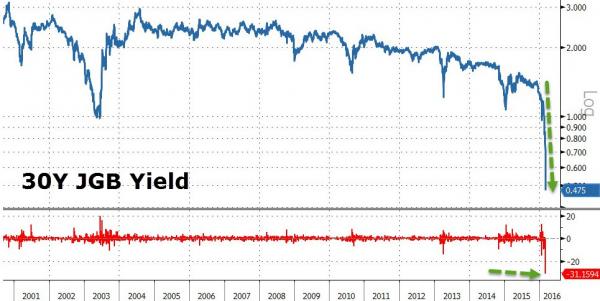I recently wrote about the inconsistency of the economic arguments for the formation of the Eurozone. The conclusion that the euro was oversold at inception leads us to conclude that calls to save it are also oversold. If the economic considerations for the Eurozone are misguided at best, let’s see if the political arguments fare any better.
The European monetary system existed in various forms for decades prior to the euro. It bred its own instabilities across the continent throughout these decades. Existing as a complex web of fixed exchange rates, continual readjustments caused an uncertainty as to what values one could expect their cross-border costs and benefits to be worth in the future. Germany, the largest and most fiscally conservative country in Europe, was long seen as overemphasized under these conditions – smaller and less fiscally and monetarily responsible countries were under constant subordination to a highly valued Deutschmark.
The creation of the Eurozone would serve four political ends:
- The single currency would offer greater integration.
- The increased mobility of capital removed most of the gains from pegging exchange rates (and that brought about many losses if these pegs were abandoned).
- The Maastricht Treaty, that key Treaty governing debts and deficits, would promote political stability
- Germany would no longer be overemphasized as an economy, and political rivalries of the past would be diminished.
It is difficult to see any of these political goals being achieved.
While the single currency may have promoted greater integration among goods transfers within Europe, there is no real evidence that this has resulted in greater integration where it really matters for most Europeans – in the labour market. Further goods market integration does not transfer immediately to labour market integration, and as this recession makes clear, the labour market is what the unemployed masses are most concerned with. (Indeed, as I made clear in my last article, labour market integration is a criterion for forming a currency union, not an expected result thereof.)
The Maastricht Treaty originally set limits on debts and deficits that European governments could incur – 60% of GDP for the former, and 3% of GDP for the latter. It also set strict inflation and exchange rate criteria for potential member countries to maintain prior to admission to the Eurozone. While these rules create political stability in the sense that they constrain the fiscal policies of the member countries, they have famously been abandoned. Indeed, Germany – the role model for European financial conservatism – was the first country to break the Maastricht Treaty. It has since become laughable. Ireland ran a budget deficit of over 30% of GDP last year. Several member states run public debt-to-GDP ratios of more than 100%. Only Finland continues to abide by these rules (with the Netherlands coming very close).
When rules are thrown out the window, discretion reigns. When discretion reigns – especially 17 different types of discretion, one for each country using the euro – the uncertainty inherent for the euro-using community soars. In a similar application, Bob Higgs famously argued that “regime uncertainty” prolonged America’s Great Depression. Many entrepreneurs and investors sat on the sidelines, unsure of the future state of the regulatory and tax environment of Depression-era America.
A similar atmosphere exists in the Eurozone today, except in a more extreme form. It is not only the business community that is hesitant to undertake new ventures; it is anyone using the euro as a currency. This includes not only European entrepreneurs, but also European consumers and interested foreign parties. Instead of providing the political stability promised by the euro promoters, we are now witnessing one of the most extreme periods of instability and uncertainty of the modern era.
Finally, the shift from the Exchange Rate Mechanism to the euro was supposed to end a period of German dominance. European countries – especially Southern European countries – were continually constrained in their fiscal and monetary policies under the ERM. As the continent was linked via a complex of fixed exchange rates, disparate inflation rates vis-à-vis the largest economy – Germany – resulted in continual strain on the individual central banks. Readjustments, commonly in the form of devaluations, became the norm. Germany implicitly set the interest rate and fiscal policy for Europe. If a European country veered from these norms, its exchange rate would come under pressure, and would have to be reset when the central bank was unable to defend it.
The European Central Bank was set up as an attempt to remove this German dominance. Now instead of being subordinate to the Bundesbank, European governments would have an equal say in how monetary affairs were to be run. For a period this was true. Indeed, one could argue that Germany became subordinate to the rest of Europe under the monetary regime of the ECB (as Philipp Bagus argues in his book The Tragedy of the Euro).
It is increasingly becoming clear that few member states are equals to Germany in the Eurozone. No good deed goes unpunished. The heavily German-funded bailouts of several Eurozone economies to date have been met with indignation. As the saying goes in Ireland, “We serve neither King nor Kaiser.”
To briefly recap, none of the four pre-euro arguments for the common currency stand the test of time. Two of them (greater capital and labour mobility, and increased integration) were actually criteria to be met prior to forming a currency union, not results to expect after. The other two – increased political stability and decreased German dominance – are being reversed with every passing day.
The great European experiment of currency integration has failed to meet any of the economic and political goals set prior to its formation. Perhaps it is time to admit the error, and stop trying to salvage a broken system.



